Diamond Color Actually Means Lack of Color

The diamond color evaluation of most gem-quality diamonds is based on the absence of color. A chemically pure and structurally perfect diamond has no hue, like a drop of pure water, and consequently, a higher value. GIA’s D-to-Z diamond color-grading system measures the degree of colorlessness by comparing a stone under controlled lighting and precise viewing conditions to masterstones of established color value.
Many of these color distinctions are so subtle that they are invisible to the untrained eye; however, these distinctions make a very big difference in diamond quality and price.

Diamond Clarity Refers to the Absence of Inclusions and Blemishes

Natural diamonds are the result of carbon exposed to tremendous heat and pressure deep in the earth. This process can result in a variety of internal characteristics called ‘inclusions’ and external characteristics called ‘blemishes.’
Evaluating diamond clarity involves determining the number, size, relief, nature, and position of these characteristics, as well as how these affect the overall appearance of the stone. While no diamond is perfectly pure, the closer it comes, the higher its value.
Flawless (FL)No inclusions and no blemishes visible under 10x magnification |
Internally Flawless (IF)No inclusions visible under 10x magnification |
Very, Very Slightly Included (VVS1 and VVS2)Inclusions so slight they are difficult for a skilled grader to see under 10x magnification |
Very Slightly Included (VS1 and VS2)Inclusions are observed with effort under 10x magnification, but can be characterized as minor |
Slightly Included (SI1 and SI2)Inclusions are noticeable under 10x magnification |
Included (I1, I2, and I3)Inclusions are obvious under 10x magnification which may affect transparency and brilliance |
A Diamond’s Cut Unleashes Its Light
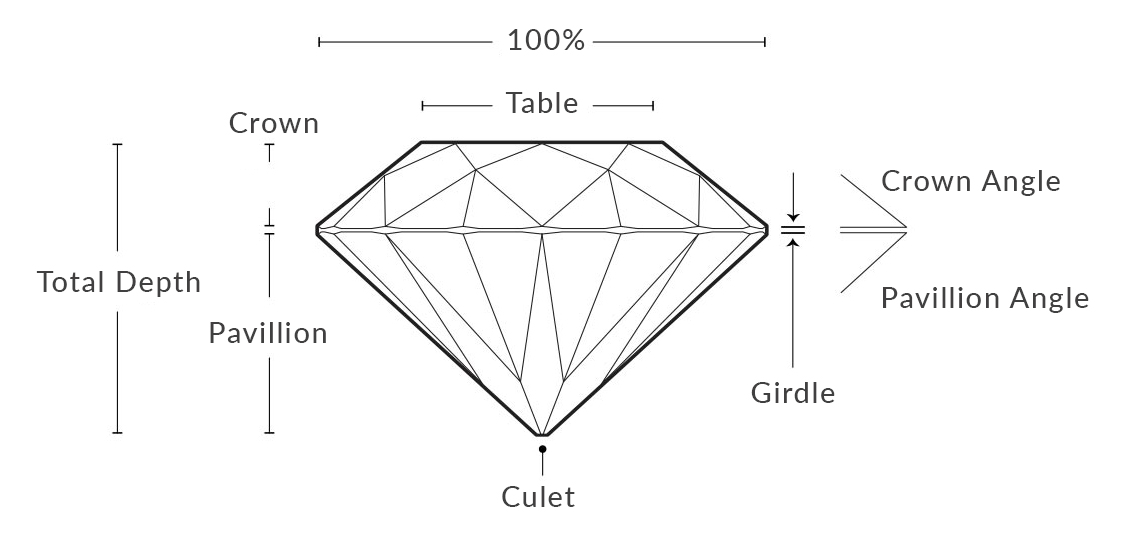
Diamonds are renowned for their ability to transmit light and sparkle so intensely. We often think of a diamond’s cut as shape (round, heart, oval, marquise, pear), but a diamond’s cut grade is really about how well a diamond’s facets interact with light.
Precise artistry and workmanship are required to fashion a stone so its proportions, symmetry and polish deliver the magnificent return of light only possible in a diamond.

|
EXCELLENTThe diamond, which has an even pattern of bright and dark areas, scores in the top category for all grade-setting determinants. |
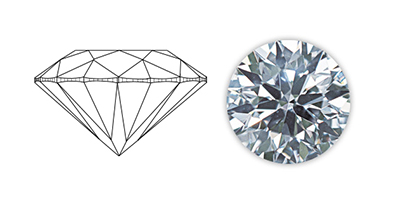
|
VERY GOODThis diamond's grade is determined by brightness, scintillation, and polish. Although no individual proportions would necessarily cause its brightness or scintillation to perform poorly, the combination of this particular set of proportions leads to increased darkness in the pavilion mains. |
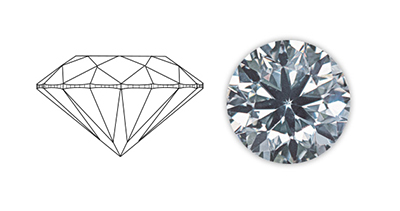
|
GOODThis diamond's grade is limited by its scintillation. In this case, the somewhat shallow pavilion angle produces dark pavilion mains. |
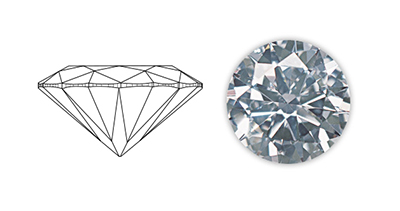
|
FAIRThis diamond's grade is limited by its scintillation. The combination of a shallow crown angle and a somewhat shallow pavilion angle leads to a face-up appearance with a lack of contrast and general darkness. |
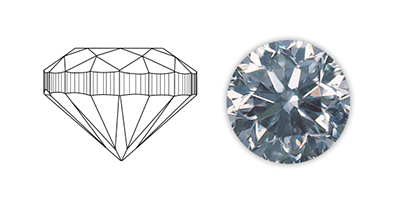
|
POORThis diamond's grade is limited by its weight ratio. Although most of the proportions for this diamond are fairly standard, the extremely thick girdle greatly increases the total depth. Therefore, this diamond's diameter is much smaller than its carat weight would indicate. |
Diamond Carat Weight Measures a Diamond’s Apparent Size

Diamond carat weight is the measurement of how much a diamond weighs. A metric “carat” is defined as 200 milligrams.
Each carat can be subdivided into 100 ‘points.’ This allows very precise measurements to the hundredth decimal place. A jeweler may describe the weight of a diamond below one carat by its ‘points’ alone. For instance, the jeweler may refer to a diamond that weighs 0.25 carats as a ‘twenty-five pointer.’ Diamond weights greater than one carat are expressed in carats and decimals. A 1.08 carat stone would be described as ‘one point oh eight carats.’

All else being equal, diamond price increases with diamond carat weight because larger diamonds are more rare and more desirable. But two diamonds of equal carat weight can have very different values (and prices) depending on three other factors of the diamond 4Cs: Clarity, Color, and Cut.
It’s important to remember that a diamond’s value is determined using all of the 4Cs, not just carat weight.